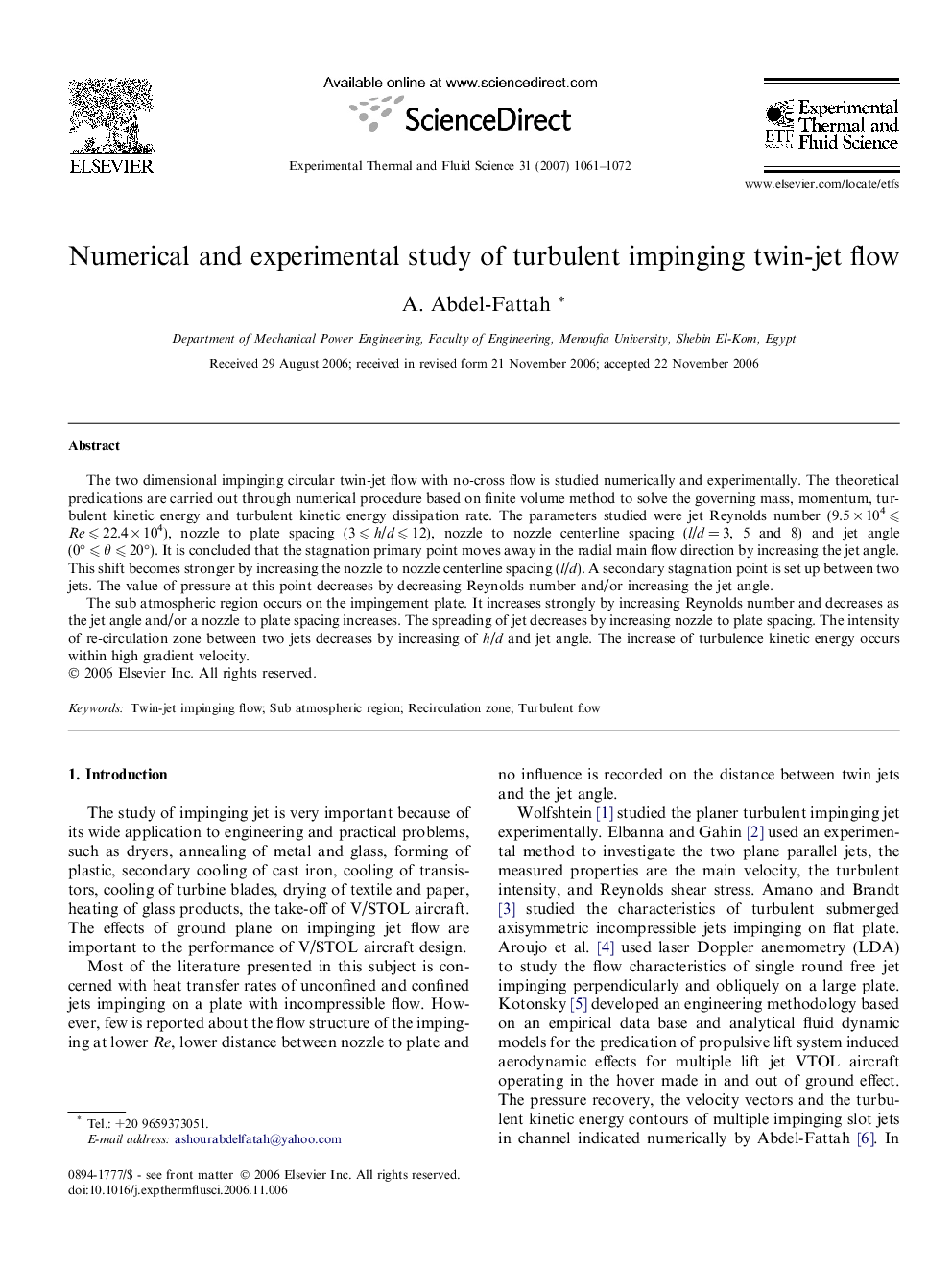| کد مقاله | کد نشریه | سال انتشار | مقاله انگلیسی | نسخه تمام متن |
|---|---|---|---|---|
| 652733 | 885040 | 2007 | 12 صفحه PDF | دانلود رایگان |

The two dimensional impinging circular twin-jet flow with no-cross flow is studied numerically and experimentally. The theoretical predications are carried out through numerical procedure based on finite volume method to solve the governing mass, momentum, turbulent kinetic energy and turbulent kinetic energy dissipation rate. The parameters studied were jet Reynolds number (9.5 × 104 ⩽ Re ⩽ 22.4 × 104), nozzle to plate spacing (3 ⩽ h/d ⩽ 12), nozzle to nozzle centerline spacing (l/d = 3, 5 and 8) and jet angle (0° ⩽ θ ⩽ 20°). It is concluded that the stagnation primary point moves away in the radial main flow direction by increasing the jet angle. This shift becomes stronger by increasing the nozzle to nozzle centerline spacing (l/d). A secondary stagnation point is set up between two jets. The value of pressure at this point decreases by decreasing Reynolds number and/or increasing the jet angle.The sub atmospheric region occurs on the impingement plate. It increases strongly by increasing Reynolds number and decreases as the jet angle and/or a nozzle to plate spacing increases. The spreading of jet decreases by increasing nozzle to plate spacing. The intensity of re-circulation zone between two jets decreases by increasing of h/d and jet angle. The increase of turbulence kinetic energy occurs within high gradient velocity.
Journal: Experimental Thermal and Fluid Science - Volume 31, Issue 8, August 2007, Pages 1061–1072